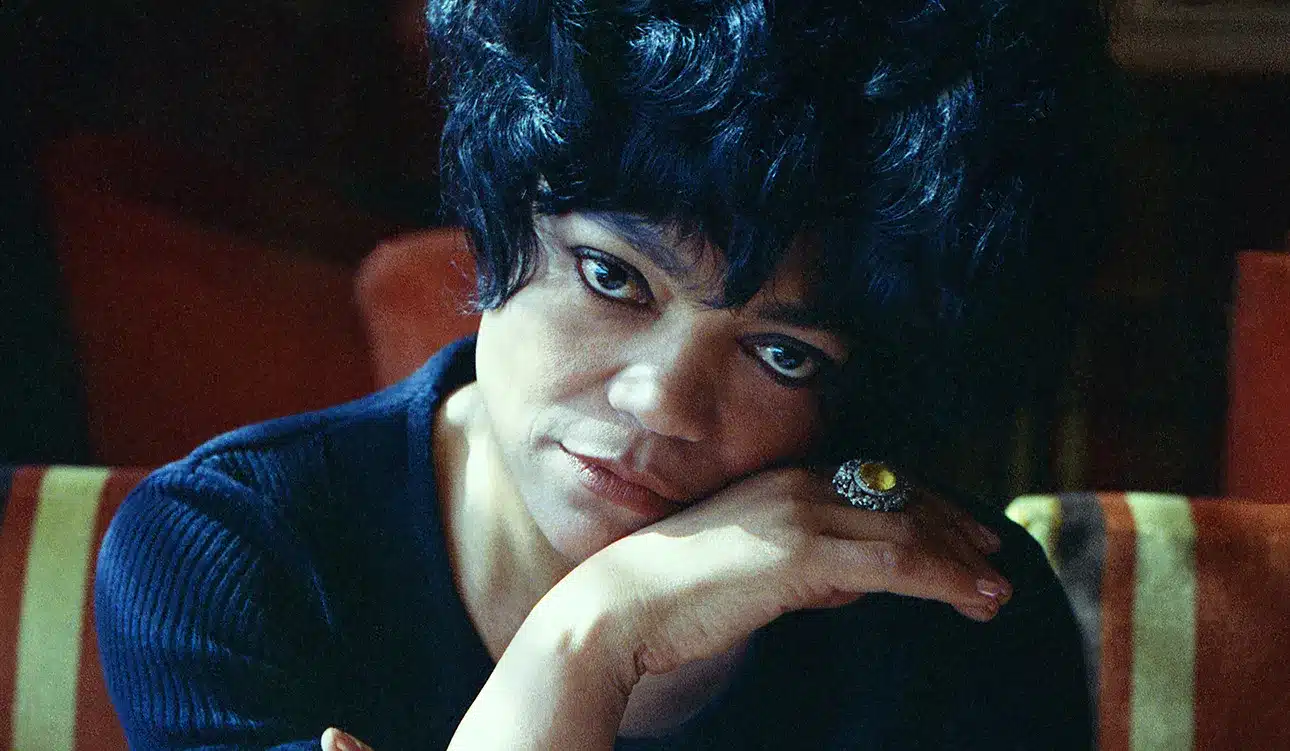Copyright popmatters

Everybody knows that the actor, singer, and activist Harry Belafonte recorded the best music ever made. Well, okay, years ago I made that somewhat exaggerated claim, for rhetorical effect, elsewhere on the web. Now I’m here to say that if such a credit doesn’t belong to Belafonte, it might go to the actor, singer, dancer, and activist Eartha Kitt. Were she still alive, Kitt could object to the association with Belafonte. According to her, the two performers had a brief sexual relationship, but he was unkind to her, saying he could never be fully satisfied with a Black woman. Still, whatever his personal flaws, the legendary Belafonte’s essential recordings stand as models of taste and craft. Connecting Kitt‘s work with them indicates how impressive her performances are throughout the compilation “Miss Kitt,’ to You, released in 1992 and gathering 16 highlights of her 1952-1958 recordings on RCA Victor. Kitt went on to outstanding achievements in subsequent decades, but her music in the 1950s represents the bedrock on which she built her career. Each song on “Miss Kitt” turns out to be an aspect of a portrait of the artist as young, smart, and sexy. However, the songs aren’t autobiographical. We don’t learn exactly who Eartha Kitt was in the way a singer-songwriter collection suggests it reveals the performer, but some of the songs discuss her public image. In contrast, others uncover layers beneath it, together depicting Kitt as a multifaceted combination of strengths, unafraid to speak her mind and willing to not appear in the most flattering light. She takes on roles and, because she has done so, gives of herself. That Eartha Kitt’s versions of show tunes, non-English-language ballads, and blues sound so right all these decades later relates to their contrast with our time. Suffused with Kitt’s famously kittenish personality, her performances present a charming antithesis—a temporary antidote—to the harsh, uncarapaced 21st century. Which is not to say that listening to Kitt means retreating from reality. Instead, Kitt needs to be reincorporated into the world, lifted into the general public’s hive mind as a song stylist, streaming into ears eager to feel better about being human. Because like Belafonte and other existentially beautiful purveyors of popular music, Kitt represents humanity doing good: not, say, robbing or ravaging but relieving suffering through entertainment. Kitt appears to have been a natural-born entertainer, or at least her talents and personality were shaped that way by challenges early in life. She was born Eartha Mae Keith in the small town of North (yes, that’s correct), South Carolina, in 1927. As she detailed in interviews and autobiographies, this light-skinned, fatherless girl endured rejection, racism, neglect, torture, and rape. Mainly for her own “safety”, she was moved to New York City by an aunt, who intimidated and beat her. However, by 1952, her undeniable talents as a dancer, singer, and actor had been recognized. Eartha Kitt had appeared in movies and on television, starred in theater, and began recording. Perhaps applicable here is John Lennon‘s self-description in 1970’s “I Found Out”: “They didn’t want me / So they made me a star.” Lennon meant his unmarried parents, who didn’t raise him, and the drive that resulted from their rejection, but we can extrapolate to the circumstances of Kitt’s early life. “Miss Kitt,” to You closes where Kitt’s recording career began, with the delightful novelty “Monotonous”, which provided her star-making opportunity in the Broadway musical review New Faces of 1952. Written specifically for Kitt, “Monotonous” details the exploits of a world-weary vamp: “For what’s worth, throughout the earth / I’m known as femme fatale / But when the yawn comes up like thunder, brother / Take back your Taj Mahal”. This song became one of Kitt’s lifelong calling cards with its tongue-in-cheek litany of reasons to be blasé. Consider the awe-inspiring self-reinvention involved in South Carolina’s Eartha Mae convincing the world that she was so full of the glamorous life that she had transcended it. This recording encapsulates much of Eartha Kitt’s appeal as a vehicle for the well-written song: enough vocal facility to navigate a melody while injecting dramatic details in service of lyrical nuances. When the material is worthy of her, it gives her enough to work with. Eartha Kitt becomes a songwriter’s best friend, with exquisite diction and an unequaled savoring of syllables. So from the start, Eartha Kitt elicited smiles, fired synapses, and at least tapped toes. Further work on stage, on screen, and in the recording studio followed. In 1967-1968 came Kitt’s star turn as Catwoman in five episodes of the Batman TV series, an opportunity to have fun and play with her public image. Her fearlessness in the cat suit led to trouble in the White House, however, where, as a guest of President Lyndon Johnson and First Lady “Lady Bird” Johnson, she criticized the ongoing Vietnam War and spoke openly about social unrest. A period of politically dictated blacklisting in the US followed, and Kitt spent years in Europe, returning to the media spotlight in the late 1970s. For those unfamiliar with Kitt as Catwoman, she may now be best remembered for stage appearances, such as in a 1987 London production of Stephen Sondheim’s Follies, and screen roles, such as in the 2006‒2008 animated series The Emperor’s New School. She died in 2008, and it’s cool that her final screen credit is for providing her trademarked purr on an episode of The Simpsons that aired two years later. Eartha Kitt’s many performances and her classic recordings celebrate her and express a desire not to take herself too seriously. The title “Miss Kitt,” to You captures that dichotomy, with its winking insistence on being treated with respect. Maintaining one’s dignity in the face of the world’s injustices can be hard enough, but doing so while retaining one’s full humanity—intelligence, humor, expressiveness, aliveness—can be heroic. Doing so as a diminutive woman of color in early 20th-century America constitutes a superpower. As if to tacitly prove her power, “Miss Kitt,” to You omits some of her biggest hits, including “I Want to Be Evil” and “Santa Baby”, both from 1953. The compilers seem to have assumed that you can find those favorites elsewhere, such as, in the case of the latter, everywhere during the Christmas season. Instead, the material combines hits with obscurities, focusing on sophisticated boom boom. That phrase isn’t Kitt’s—it’s the title of a 1965 song by the girl group the Shangri-Las. They were tough New Yorkers who owed at least a spiritual debt to Kitt. Indeed, it’s tempting to declare that without Eartha Kitt, there wouldn’t have been girl groups. Diana Ross cited her as a model for the Supremes. In any case, sophisticated boom boom will do as shorthand for lightly jazzy pop that tickles the mind while energizing the body. Eartha Kitt’s first two releases, 1953’s RCA Victor Presents Eartha Kitt and 1954’s That Bad Eartha, were recorded with Henri René and His Orchestra. Each of these albums was an eight-song ten-inch, and in 1956 they were combined into a 12-song, 12-inch, also called That Bad Eartha. Most of the material on “Miss Kitt” comes from this body of work. Kitt’s 1953 recording of the perennial favorite “Let’s Do It” evidences her delightful way with a clever lyric set to an infectious, perhaps instantly memorable tune. Written by Cole Porter for the 1928 Broadway musical Paris, “Let’s Do It”—also known as “Let’s Do It, Let’s Fall in Love” and “Let’s Do It (Let’s Fall in Love)”—ranks with Chaucer and Shakespeare in setting a standard for bawdy double entendre. Or does it? Eartha Kitt’s affectionate rendition, delivering but not overdoing the come-on, makes the lyrics seem multidimensional, their catalog boundless: “Birds do it, bees do it / Even educated fleas do it”, and so on. However, as written, the lyrics are briefer and more repetitious than expected, and some lines fall just this side of flat (“educated fleas”?). The song needs an interpreter, and Kitt clearly delights in feeling her way through Porter’s playfulness as if experiencing each sensation for the first time. It’s hard to imagine anyone improving on her version—no, not even Ella Fitzgerald. Also from 1953 are the wistful, wised-up ballad “Smoke Gets In Your Eyes”, which Kitt sings with a convincing ache and bit of her trademark purr, and “C’est Si Bon (It’s So Good)”, in which she moves through modes of feeling and contemplation. Take a minute to savor the beauty of Kitt’s French, both sung and spoken, and the confidence of her chuckle as she ponders life on the arm of a well-to-do lover. “Cadillac car… mink coats,” she muses in English, and Kitt probably did prize those things, though not only them. Track seven on “Miss Kitt,” to You is mislabeled as “Avril in Portugal” but is in fact “Angelitos Negros”. Both appeared in the 1953 version of That Bad Eartha, and presumably a production error resulted in the swap on “Miss Kitt”. “Angelitos Negros” is in Spanish rather than French, and it’s half a minute longer than “Avril in Portugal”. More importantly, it replaces a sweet but insubstantial tribute to April in Portugal with an elegant combination of spare, Latin-inflected percussion, minimal orchestration, a dash of Spanish guitar, and an address to a painter who disrespects his own negritude by never depicting black-skinned angels when surely there are such beings in heaven. This sentiment put Eartha Kitt ahead of her peers in making race an issue. The song remained just as fresh when Roberta Flack, yet another heir to Kitt, performed it on her debut album, 1969’s First Take. “Miss Kitt” includes just one song from Kitt’s actual first full-length album, 1955’s Down to Eartha, recorded with René‘s Orchestra and Chorus. “Hey, Jacque” gives Kitt a chance to croon. The timelessly delicate orchestration alone justifies this little address’s inclusion here. Especially tasty is the section where the accordion comes in and Kitt speaks, playing the lovelorn woman. “Je Cherche Un Homme (I Want a Man)” was the B-side of a 1955 single. The music is unobjectionable easy listening, and Eartha Kitt comes across as an American Edith Piaf, which is probably why the compilers made this the collection’s opening track. Should you hear this one—or a similar one—and think Kitt was just a Piaf knockoff, think again and listen on, because Kitt has so much more to offer. Here, the singer declares, “An ordinary guy’s all right with me,” for perhaps the first and last time in Kitt’s career. “Miss Kitt” includes a few songs from the 1956 album Thursday’s Child, recorded with René and His Orchestra. “Just an Old Fashioned Girl” again suggests Piaf but anticipates the vibrato of the folk-pop-rock singer-songwriter Buffy Sainte-Marie, who began recording in 1964 and might have admired Kitt. However, with the genders switched, this harpsichord-enhanced track could be the English pop-rockers the Kinks in the mid-1960s, and it would not be surprising for that band’s Ray Davies, purveyor of ironic and theatrical social commentary, to have been inspired by Kitt? In this song, a gold-digger coyly embraces the old world while declaring her desire for riches: “I’m just an old-fashioned girl with an old-fashioned mind / Not sophisticated, I’m the plain and simple kind / I want an old-fashioned house, with an old-fashioned fence / And an old-fashioned millionaire.” (So does Lola.) On her hour-long 1967 TV show Something Special, Kitt coupled this song with “My Heart Belongs to Daddy”, a Cole Porter tune she recorded in 1953, included on “Miss Kitt”. The title could refer to a father-daughter relationship. However, the lyrics’ series of punning double entendres clearly refer to a sugar daddy, the backdrop against which the singer engages in dalliances. On the show, as in her original, Kitt delivers absolutely straight-faced such laugh lines as “If I invite a boy some night / To dine on my fine finnan haddie / I just adore his asking for more / But my heart belongs to Daddy”. Eartha Kitt makes each delicious scenario fun—not silly—and thus powerfully sexy. Through Something Special, Kitt plays with her gold-digger persona like a cat with a cat toy. Wearing furs and animal prints, wrapping herself in mink, slinking and purring, she embodies the character while also distancing herself from it by directing her penetrating gaze straight at the camera. It’s unnerving to see so much intelligence, quick wit, and self-possession wrapped up in one unique package. Now and then, she moves past her sly grin to smile widely. A few times, she unexpectedly throws back her head and laughs, seemingly taken over by the elaborate joke of it all. Eartha Kitt comes across as her own person, owning her persona. She would not, never seemed to, have it any other way. One of her late-career triumphs was delivering Stephen Sondheim’s “I’m Still Here”, the testament of a show-business survivor: “Black sable one day / Next day it goes into hock / But I’m here / Top billing Monday / Tuesday, you’re touring in stock / But I’m here / First, you’re another sloe-eyed vamp / Then someone’s mother, then you’re camp / Then you career from career to career / I’m almost through my memoirs, and I’m here / Talk about owning your persona.” For contrast, think of another 1950s bombshell, a very different kind of commodity: Marilyn Monroe. Kitt’s and Monroe’s personas intersected in the gold-digger aspect; Monroe is forever associated with the song “Diamonds Are a Girl’s Best Friend”. Whereas Monroe became the archetypal buxom “dumb blonde”—a form she toyed with until finding herself straightjacketed and self-destructing—Kitt from the start was a sex subject rather than object. Or rather, sex was her subject, rewards for it her object. “I’m happy to do this, be this,” she seems to say, “because I’m here, and I’m a small Black woman in a business, society, country, world that is racist and sexist to its bedrock, and I’m unwilling to be subservient, so I will be this performer because doing so enables me to combine my many talents into a representation of myself that I enjoy and that will reward me for my efforts, but make no mistake: I choose to be this thing. I take as much pleasure from inhabiting it as you do observing it. You may read into it and think you know me, but you cannot own me.” Perhaps the difference between Monroe and Eartha Kitt comes down entirely, as much as anything ever comes down entirely, to race. The socioeconomic constructs around white skin and black skin led Monroe, whose people had always been free, into a servitude that she hadn’t even known to fear. Meanwhile, they formed Kitt into a bundle of self-determination. In other words, Eartha Keith, from North Carolina and South Carolina, knew in her bones what was at stake. She could draw on depths of experience sonically or ironically, as shown by two That Bad Eartha tracks on “Miss Kitt”. “Lazy Afternoon” displays, as the title suggests, a haunting languidness, as if Lana Del Rey had a deeper, more penetrating voice. Billie Holiday also comes to mind, but as if her “Gloomy Sunday” wasn’t a life-or-death struggle as much as a phase. By contrast, “Mademoiselle Kitt” is cooking Latin jazz, sung in Spanish with athletic flair. Translated declarations include “I’m asocial / I’m intellectual and chic… I’m a global artist… Do-it-yourself Kitt”. “I’m a Funny Dame” was the B-side of a 1956 single. Recorded with Joe Reisman and His Orchestra, this track is vibraphone-fueled lounge jazz with stellar electric guitar soloing. Kitt delivers the intellectual chicness promised in “Mademoiselle Kitt”, presenting herself as not traditionally expressive but “yours just the same”. “A Woman Wouldn’t Be a Woman” and “Toujour Gai” are both sides of a 1957 single recorded with the Shinbone Alley Orchestra and Chorus, remnants of a short-lived Broadway musical, Shinbone Alley. “A Woman” is horn-fueled R&B. With drums, it’d be rock and roll. Working up a throaty roar she doesn’t display elsewhere on this collection, Eartha Kitt certainly has the gusto of rockabilly cats such as Wanda Jackson. “Toujour Gai” returns Kitt to the familiar territory of her 1953 chansons, but her trilling here might have inspired Dolly Parton, whose tarted-up persona owes something to Kitt’s earthy sophistication. Two spirited W. C. Handy blues come from 1958’s St. Louis Blues, recorded with Shorty Rogers and His Orchestra. Swinging New Orleans style with a touch of Hollywood in the backup vocals, they further testify to Eartha Kitt’s versatility. It is, perhaps paradoxically, a limited versatility. She fits into songs the way certain classic Hollywood stars, including Monroe, fit into roles—bringing an instantly recognizable set of mannerisms that, under the right circumstances, express every detail and add just a touch more specialness: humor, intensity, feeling, what have you. Here, she’s unforcedly bluesy without suggesting a whole new Eartha Kitt. Lots of Kitt collections include more or less than this one does, but this one thoroughly satisfies. Omitting trivia such as 1956’s “Honolulu Rock and Roll” (included on The Essential Eartha Kitt), “Miss Kitt” is a uniformly pleasurable listen in addition to a potential revelation. It might inspire the desire to hear Kitt’s complete RCA Victor material, or at least the hits not delivered here, or it might lead a listener to explore later obscurities, such as her 1970 covers of the folk-pop singer-songwriter Donovan’s “Hurdy Gurdy Man” and “Wear Your Love Like Heaven” or her 1988 collaboration with the electro-popsters Bronski Beat, “Cha Cha Heels”. Eartha Kitt’s later work doesn’t reveal as much about her, though, as about the importance of matching song to performer. The Donovan songs weren’t great fits; “Cha Cha Heels” was perfect. On her TV special, Kitt and Sergio Mendes’ Brasil ’66 gamely rendered the Beatles‘ “Day Tripper”, a lean, riff-driven pop-rock song whose lyrics didn’t give Kitt enough detail to dig into. A different Beatles song might have worked better, such as “Drive My Car”, whose lyrics (“Yes, I’m gonna be a star / And maybe I’ll love you”) would have fit her persona and whose melody, incidentally, bore a musical resemblance to “Monotonous”. She might also have inhabited “In My Life” (“But of all these friends and lovers / There is no one compares with you”) the way she later took over “I’m Still Here”. She didn’t necessarily need a Sondheim-caliber combination of wit and grit, but to be at her best, Eartha Kitt needed sound and sense to carry equal weight.



